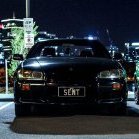r34 engine rebuild
Announcements
-
Similar Content
-
Latest Posts
-
Congratulations on the citizenship, that's huge. Needs to be celebrated with a skid, true Aussie style (post vid) 😂 There's a cruise this Sunday to Lorne if you're keen, meeting at Derrimut. PM me for more details if you want to come and I'll happily meet up with you beforehand.
-
Not sure how I feel about the tape, my colourblind ass can see the difference in shade easy. Where was the cover hiding?
-
By BourneToLive · Posted
Yup. Mine was behind the dash. I guess after my IC7 install, the OEM cluster connectors were push into the dash, and the terminals (which are on the exterior of the connector so it contacts the traces in the cluster), contacted the chassis which caused my tail lamp fuse to blow. It also messed with my wideband. Taped them up and that fixed it.






Recommended Posts
Create an account or sign in to comment
You need to be a member in order to leave a comment
Create an account
Sign up for a new account in our community. It's easy!
Register a new accountSign in
Already have an account? Sign in here.
Sign In Now